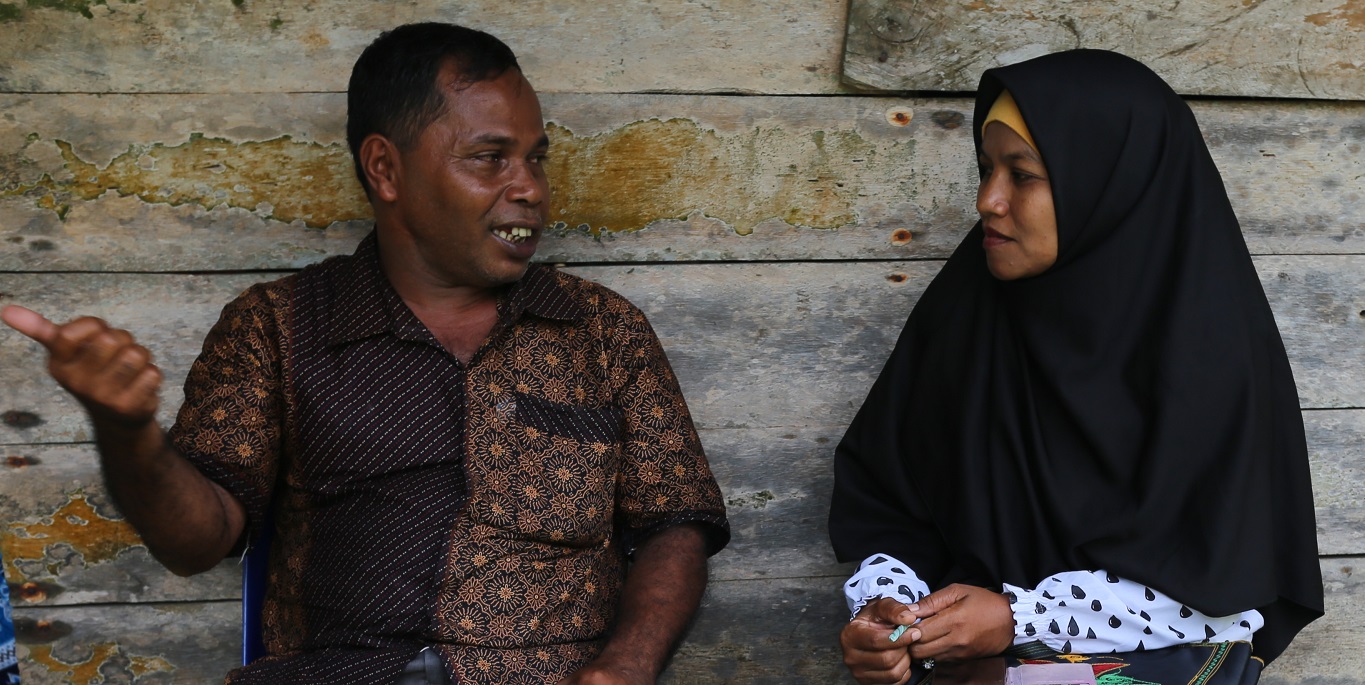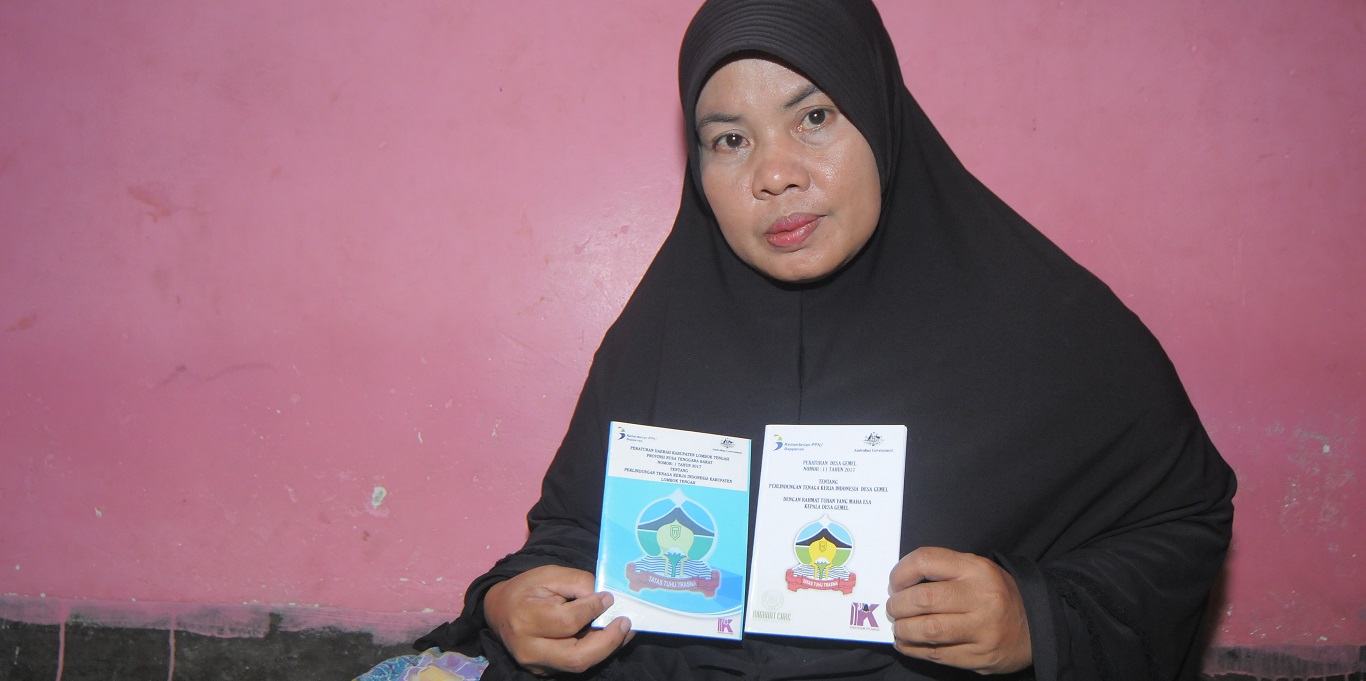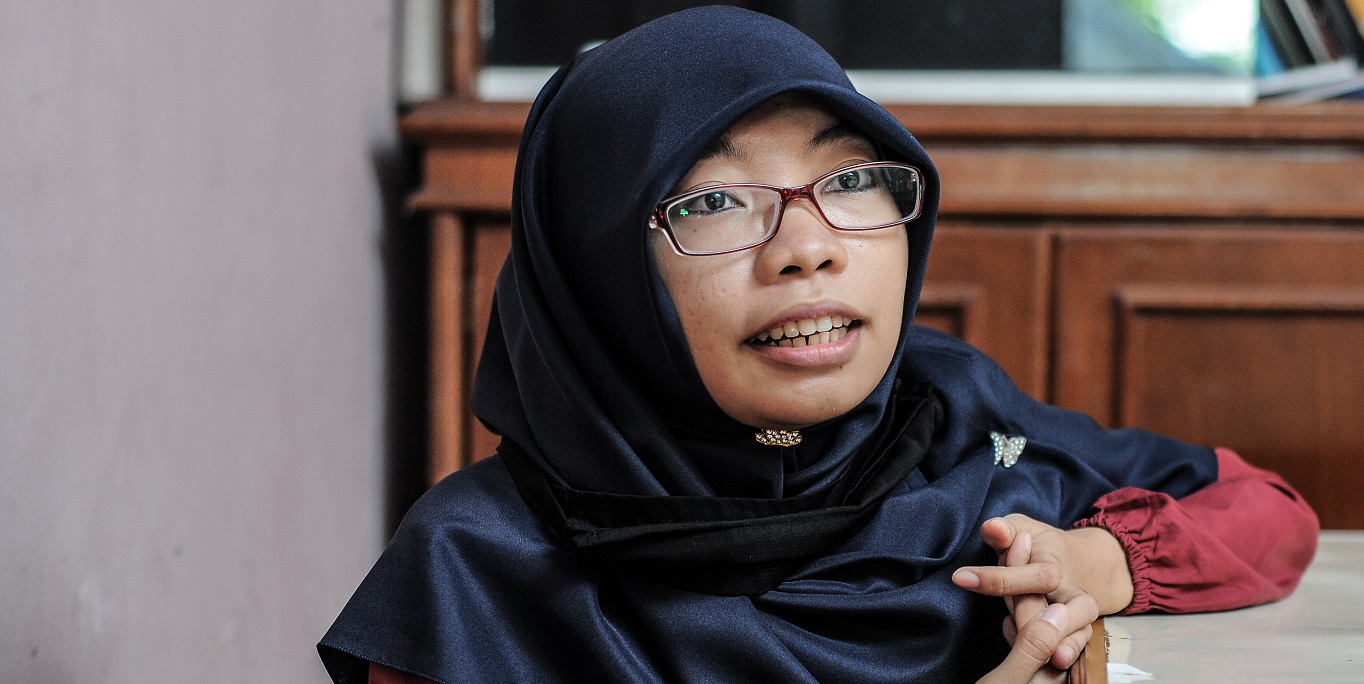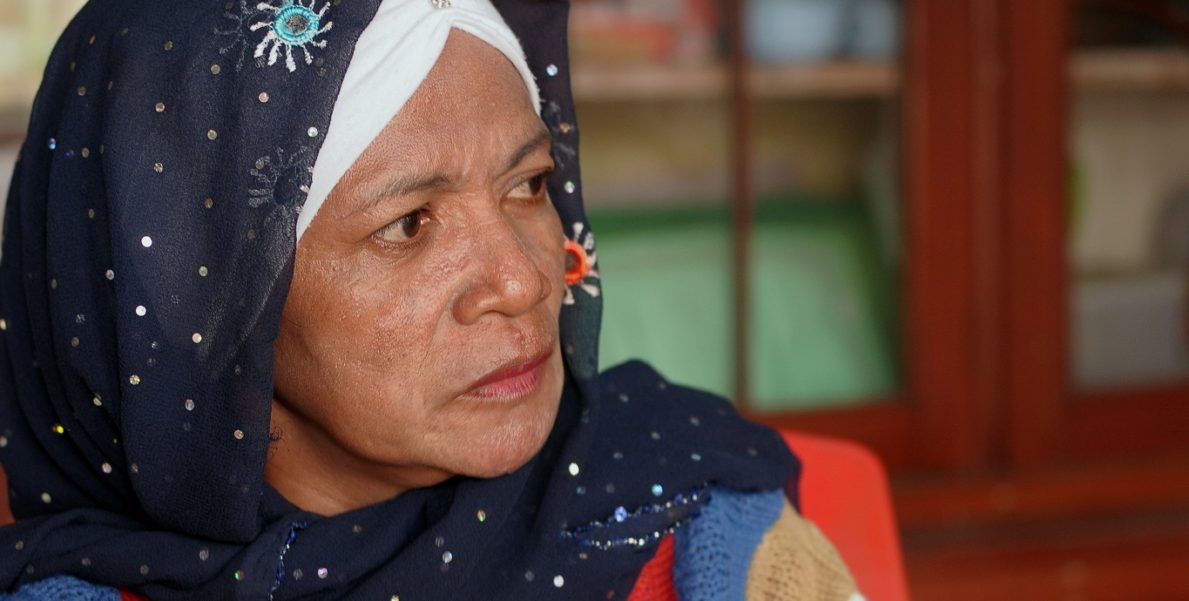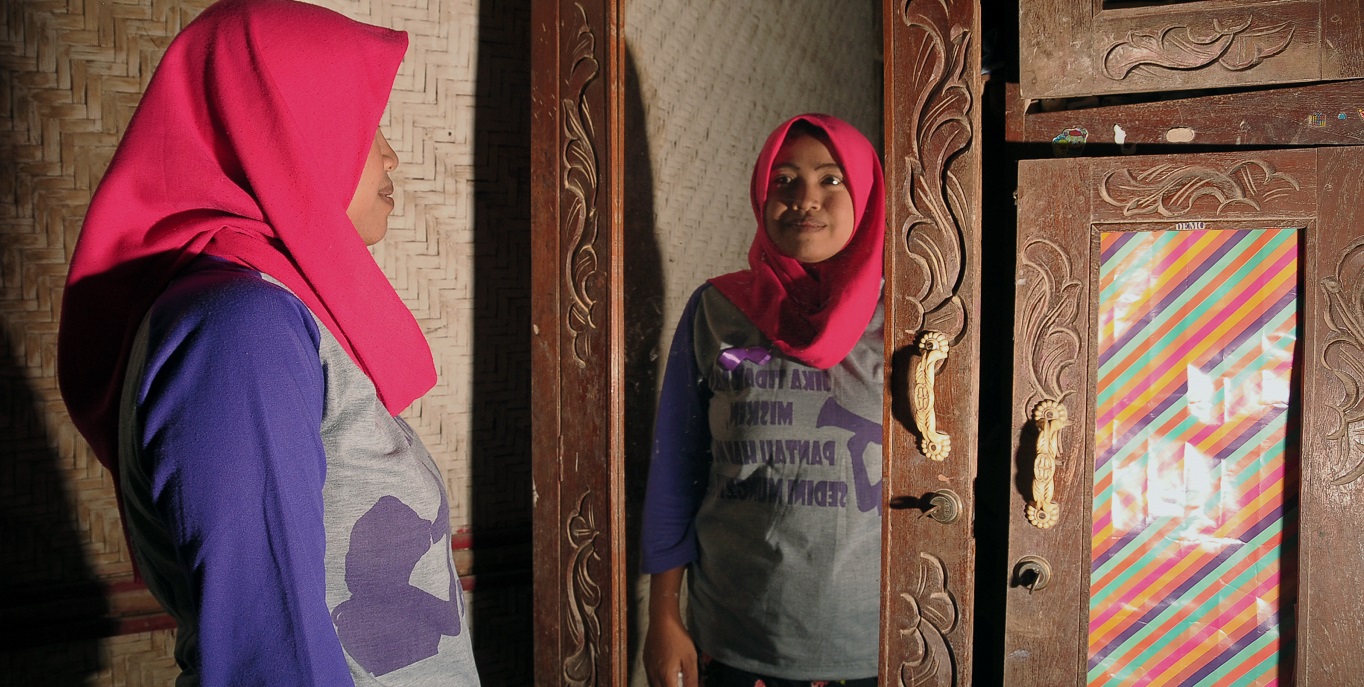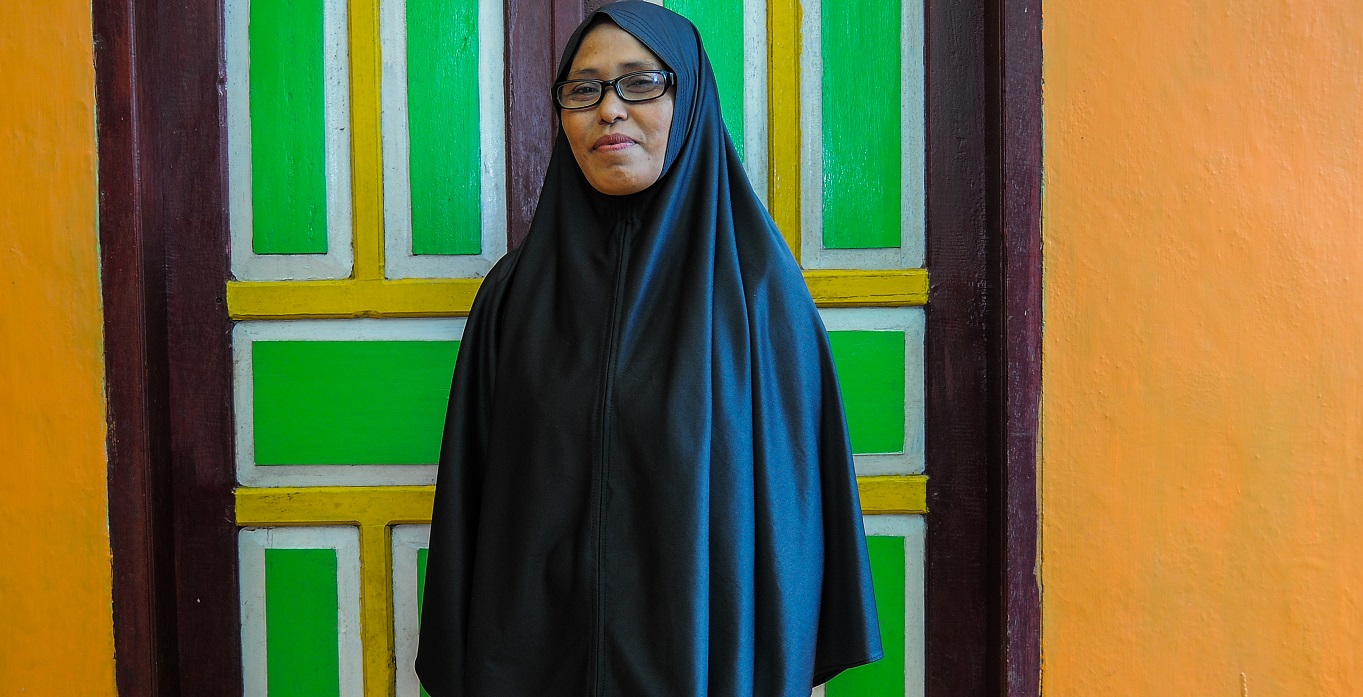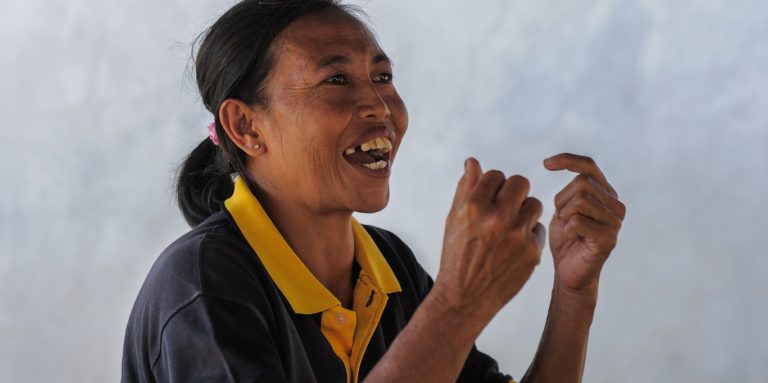Stories
Bidan Murni Tours Around the Village to Campaign for Cervical Cancer Early Detection
30 December 2017Penulis: admin
There were around twenty women from Bonto Maccini village, Sinoa, Bantaeng DIstrict, South Sulawesi, who had gathered on the mother and child health post (posyandu) terrace that afternoon. Most of them were between 20-30 years old, although there were also some older women and teenagers. They were watching a video about the danger of cervical cancer: the symptoms, lifestyle that increases the cancer risk, and the importance of performing early cancer detection through VIA and Pap Smear tests. Once in a while, a middle-aged woman paused the video to explain the video content they have just watched. She was Bidan (midwife) Murni.
“It is in the village. It’s different from in the city. We face more challenges here, especially because of the people’s level of understanding and education. When I’m explaining something, sometimes I have no idea whether they understand it or not. If they understand, they are just silent. If they don’t understand, they are silent too. So usually I make a quiz for them. I ask them something and I ask to repeat the answer. So I can tell whether they have understood or not. We need to be very patient,” Bidan Murni laughed.
“Some of the women don’t really understand Indonesian, so usually I also deliver the materials in Makassarese, which is the local language in the Makassar area.”
Although Bidan Murni already in her late forties, she is still very enthusiastic to go from one village to another in order to give educational talks on the importance of early detection of cervical cancer—especially for women in reproductive age.
That afternoon, she was monitoring the Posyandu in Bonto Maccine village. Bidan Murni is actually assigned as a midwife at the village health post (Poskesdes) in Bonto Tiro village.
“Before, to take the VIA test you have to go to Makassar. I took this test in Makassar as well,” said Murni.
“But after a few years, this test was then introduced to the villages. There was a MAMPU-Aisyiyah program which trained midwives on how to conduct VIA tests. After that, we did some educational talks and conducted tests to the women in villages.”
Together with other midwives from public health centres (Puskesmas) in several villages in Bantaeng District, Murni participated in a 2 days training on how to conduct VIA tests.
“At first, we faced a lot of challenges in carrying on the information, because people were not aware about cervical cancer yet. Some husbands prohibited their wives to take the test. They said, ‘You are not sick, why should you take the test?’ I had to explain that this test is to find out whether you are sick or not. This is because the cervical cancer symptoms can only show up when it is already at stadium 2,” Murni explained.
“If you detected it earlier, you can be treated faster.”
There are some symptoms of cervical cancer, such as: hemorrhage outside the menstrual cycle, pain during sexual intercourse, hip pain, or hemorrhage after sexual intercourse.
“A lot of vaginal discharge could also be a symptom,” said Murni. “Usually, when women experience it, they only treat the vaginal discharge. In fact, it can actually be a cancer symptom.”
Having an understanding on cervical cancer danger and the importance of conducting an early detection test, it does not mean that the women in the village would like to take the VIA test—even though, in some target villages, the test is conducted free of charge.
“They thought that VIA test would be painful. This is because they heard that there’d be a tool that would be inserted into their vagina. And because they have to show their vagina, they are embarrassed,” said Murni.
“This is similar with the situation when they want to have a contraceptive. They only want the injection, all the time. Although actually they already know that we can check which contraceptive options that is the most suitable for them. If not, there will be a side effect such as headaches, menstrual pains, and other complaints. But they don’t want to have spirals or IUDs because they are embarrassed to show and open up their vagina.”
So far, there have been 40 women in reproductive age who have taken VIA test in Murni’s target area.
“The program’s target is 90 women,” she said. “So now we are already half way.”
To have more women to get early cervical cancer detection through VIA test, Murni encourages the women who have taken this test to share their experience with their friends.
“Those who have taken the test will say, oh, it’s not painful, and it’s okay to show your vagina because only the midwife who see it. So the other women will take this test too. They are still embarrassed to come by themselves, so they have to be accompanied by a friend.”



